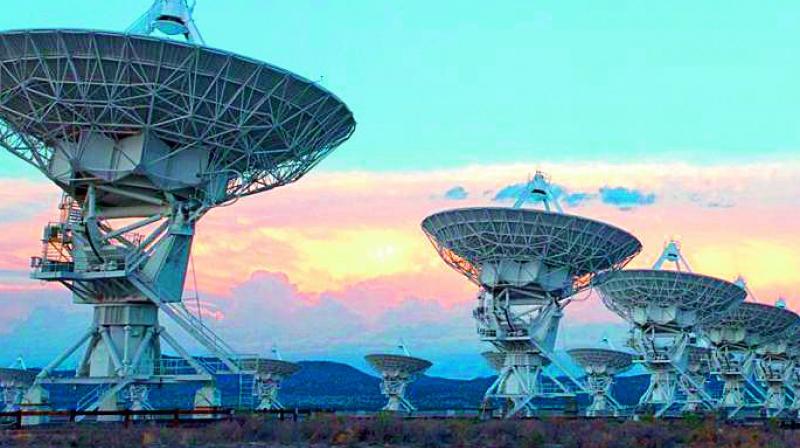Radio bursts coming from distant galaxy

In July 2015, Russian billionaire Yuri Milner announced the creation of Breakthrough Listen, a decade-long project that would conduct the largest survey to date for signs of extra-terrestrial communications (ETI). As part of his non-profit organisation, Breakthrough Initiatives, this survey would rely on the latest in instrumentation and software to observe the 10,00,000 closest stars and 100 closest galaxies.
Using the Green Bank Radio Telescope in West Virginia, the Listen science team at UC Berkeley has been observing distant stars for over a year now. And less than a week ago, they observed 15 Fast Radio Bursts (FRBs) coming from a dwarf galaxy located three billion light-years away. According to a study that described their findings, this was the first time that repeating FRBs have been seen coming from this source at these frequencies.
The team’s study, titled “FRB 121102: Detection at 4 – 8 GHz band with Breakthrough Listen backend at Green Bank,” was recently published in The Astronomers Telegraph.
Led by Dr Vishal Gajjar — a postdoctoral researcher at the University of California, Berkeley — the team conducted a detailed survey of FRB 121102. This repeating FRB source is located in a dwarf galaxy in Auriga constellation, around 3-billion-light-years from Earth.
To clarify, FRBs are brief, bright pulses of radio waves that are periodically detected coming from distant galaxies. This strange astronomical phenomena was first detected in 2007 by Duncan Lorimer and David Narkovic using the Parkes Telescope in Australia. To honor their discovery, FRBs are sometimes referred to as “Lorimer Bursts”.
Many FRB sources have been confirmed since then, some of which were found repeating.
The source known as FRB 121101 was discovered back on November 2, 2012, by astronomers using the Arecibo radio telescope.
At the time, it was the first FRB to be discovered; and by 2015, it became the first FRB to be seen repeating. This effectively ruled out the possibility that repeating FRBs were caused by catastrophic events, which had previously been theorised.
And in 2016, FRB 121102 was the first FRB to have its location pinpointed to such a degree that its host galaxy could be identified.
On August 26, Dr Gajjar observed FRB 121102 using the Green Bank Radio Telescope in West Virginia and found evidence of 15 new pulses coming from FRB 121102 in a newly-active state.

